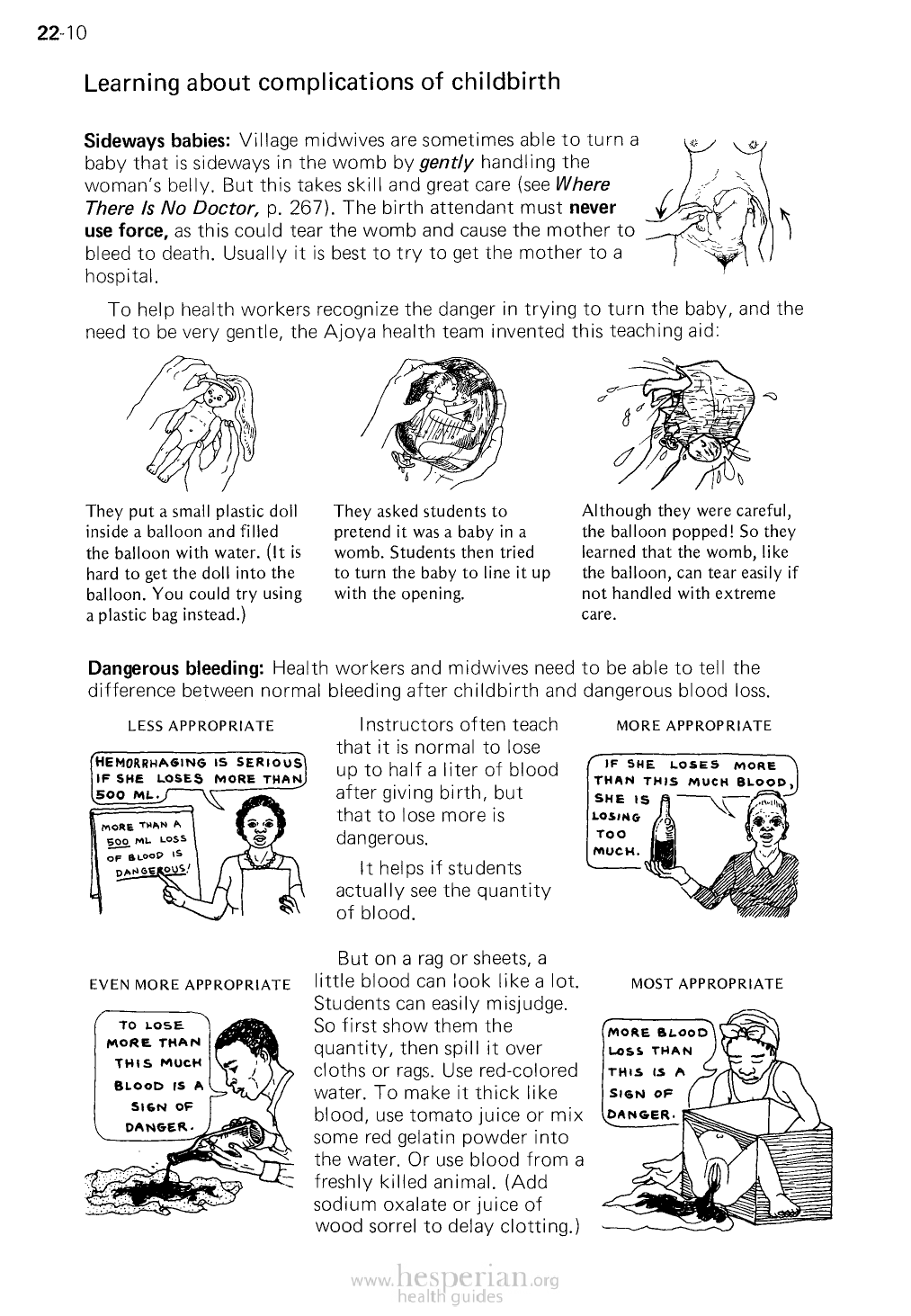
22-12
Learning about complications of childbirth
Sideways babies: Village midwives are sometimes able to turn
a baby that is sideways in the womb by gently handling the
woman’s belly. But this takes skill and great care (see Where
There fs No Doctor, p. 267). The birth attendant must never
use force, as this could tear the womb and cause the mother
to bleed to death. Usually it is best to try to get the mother to a
hospital.
To help health workers recognize the danger in trying to turn the baby, and the
need to be very gentle, the Ajoya health team invented this teaching aid:
They put a small plastic doll
inside a balloon and filled
the balloon with water. (It is
hard to gel the doll into the
balloon. You could try using
aplastic bag instead.)
1 hey asked students to
pretend it was a baby in a
womb. Students then tried
to turn the baby to line it up
with the opening.
Although they were careful,
the balloon popped! So they
learned that the womb, like
the balloon, can tear easily
if not handled with extreme
care.
Dangerous bleeding: Health workers and midwives need io be able to tell the
difference between normal bleeding after childbirth and dangerous blood loss.
LESS APPROPRIATE
Instructors often
teach that it is normal to
lose up to half a liter of
blood after giving birth,
but that to lose more is
dangerous.
MORE APPROPRIATE
It helps if students
actually see the quantity
of blood.
EVEN MORE APPROPRIATE
But on a rag or sheets,
a little blood can look like
a lot. Students can easily
misjudge. So first show them
the quantity, then spill it over
cloths or rags. Use red-colored
water. To make it thick like
blood, use tomato juice or mix
some red gelatin powder into
the water. Or use blood from
a freshly killed animal. (Add
sodium oxalate or juice of
wood sorrel to delay clotting.)
MOST APPROPRIATE